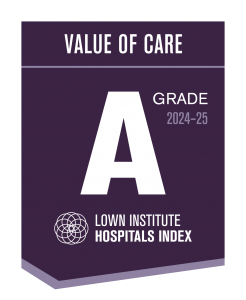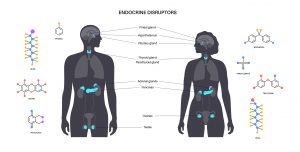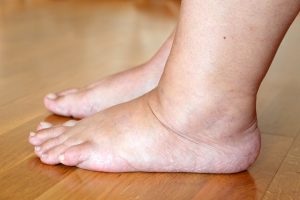We are pleased to introduce Dr. Aldane R.K. Hoilett and Dr. Jonathan Macias, the new hematologists-oncologists at the MediSys Health Network Cancer Center located on the Jamaica Hospital Medical Center campus.
Dr. Hoilett obtained his medical degree at Loma Linda University School of Medicine in California. He then completed his residency in internal medicine and fellowship in hematology and oncology at the Zucker School of Medicine at Hofstra/Northwell Health. As a general hematologist and medical oncologist at the MediSys Health Network Cancer Center, Dr. Hoilett treats a wide range of conditions, including various types of cancer (such as breast, lung, prostate, and colorectal cancers), hematological disorders (such as anemia, leukemias, and lymphomas), and complications related to these diseases. “My focus is on providing comprehensive care that addresses both the medical and emotional needs of my patients”, he said.
Dr. Macias is board-certified in internal medicine and received his medical degree at the Florida International University Herbert Wertheim College of Medicine after obtaining his undergraduate degree at the University of Miami. He then completed his residency at the Zucker School of Medicine at Hofstra/Northwell Residency Program in internal medicine at North Shore University Hospital and Long Island Jewish Medical Center. He also completed a fellowship in hospice and palliative medicine and a fellowship in hematology and oncology at the Zucker School of Medicine at Hofstra/Northwell Health. Dr. Macias, says about his work as a hematologist-oncologist, “Cancer is complicated, but new treatments are always being discovered, which keeps my job exciting.” He also says that he loves getting to know his patients over time and being there for them, whether through tough times or celebrating with good news. “Being able to give my patients hope and improve their lives is why I chose this job. It’s hard work, but it’s worth it when I see the difference I can make in their life”, he said.
Dr. Hoilett’s journey into medicine was deeply influenced by his experiences with cancer in his community. He explains, “Growing up, I witnessed the profound impact of this disease on individuals and families, including my aunt who passed away from breast cancer.” These experiences helped spark his interest in oncology and the biology of cancer “compelling me to understand how such a devastating illness could affect lives.” He became increasingly aware of the disparities in healthcare access faced by those from less fortunate backgrounds, fueling his desire to specialize in oncology, where he could provide advanced medical care and advocate for health equity. He is passionate about bridging the gaps in care and building trust within the healthcare system to ensure that all patients receive the support they need during their treatment journeys.
Similarly, Dr. Macias was inspired to pursue medicine because he wanted to make a real difference in people’s lives. “I loved learning about how the human body works and how to treat illnesses”, he says. “My family also played a big part in my decision to go into medicine.” Dr. Macias wanted to help them through their recovery whenever they got sick. “The idea of being able to help my family when they are sick or injured motivated me to be able to do the same for my patients.”
For Dr. Hoilett and Dr. Macias, deciding to work at the MediSys Health Network Cancer Center comes down to wanting to serve the community. Dr. Hoilett is excited about joining the team and having the chance to collaborate with dedicated professionals who share the commitment to improving cancer care in the community. “The affiliation with Memorial Sloan Kettering Cancer Center enhances our capabilities, allowing us to offer cutting-edge treatments and clinical trials locally”, Dr. Hoilett says. He hopes to bring advanced medical treatments and a strong emphasis on health education and outreach by addressing the unique healthcare barriers faced by our diverse population. “I aim to empower patients with knowledge about their conditions and treatment options. I want to emphasize my commitment to health equity and community outreach initiatives.” Dr. Hoilett believes that by actively engaging with the community, we can improve access to care and ensure that all patients receive the support they need throughout their healthcare journeys.
Dr. Macias was drawn to the MediSys Health Network Cancer Center’s commitment to providing high-quality, patient-centered care in a diverse community. “Growing up in a Spanish-speaking household, I had to help my family find doctors and get them to appointments. I appreciate the collaborative environment at the MediSys Health Network Cancer Center, where multidisciplinary teams work together to address complex medical issues and provide culturally competent care.” The supportive atmosphere among staff and the emphasis on continuous learning and professional growth further solidified his decision to work at the hospital. He believes that working at the MediSys Health Network Cancer Center will enable him to contribute positively to the community while advancing his medical skills. “I hope to connect patients with the latest treatments and easy access to clinical trials when needed.”
We are proud to welcome Dr. Hoilett and Dr. Macias to our team. We look forward to the work they and the rest of the Oncology and Hematology Departments will do to provide high-quality care to our community.
All content of this newsletter is intended for general information purposes only and is not intended or implied to be a substitute for professional medical advice, diagnosis or treatment. Please consult a medical professional before adopting any of the suggestions on this page. You must never disregard professional medical advice or delay seeking medical treatment based upon any content of this newsletter. PROMPTLY CONSULT YOUR PHYSICIAN OR CALL 911 IF YOU BELIEVE YOU HAVE A MEDICAL EMERGENCY.


















